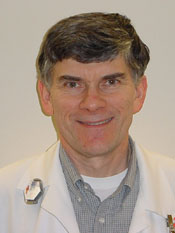Program Information
In Memoriam of Bengt Bjarngard: SBRT II: Small Field Dosimetry - TG155
I Das1*, C Reft2*, (1) Indiana University- School of Medicine, Indianapolis, IN, (2) University Chicago, Chicago, IL
Presentations
MO-D-BRD-2 Monday 11:15AM - 12:15PM Room: Ballroom DSpecialized radiation treatment such as SRS/SRT. SBRT, IMRT, VMAT, Tomotherapy, CyberKnife and Gamma Knife use small fields or combination of small fields where dosimetry is challenging and uncertain due to non-equilibrium conditions such as longitudinal and lateral disequilibrium. Additionally the primary photon fluence is greatly affected by the obstruction of the source size by the jaws creating a large dose gradient across the field. Electronic equilibrium is a phenomenon associated with the range of secondary particles which depend on the beam energy, photon spectrum and the composition of the medium. Additionally, the finite size of detectors creates volume averaging and fluence perturbations especially in small fields. The IAEA/AAPM has provided a frame work for non-compliant reference dosimetry in small fields1. The AAPM TG-1552 has adopted this frame work to provide guidelines in relative dosimetry. This course provides the insight of TG-155 that defines small field, provides recommendations for suitable detectors and associated correction factors to convert reading to dose. Recommendations of a good working practice for relative dosimetry measurements (PDD, TMR, output factor, etc.) and dose calculations based on the new formulation is are elaborated. It also discusses beam modeling and dose calculations as a critical step in clinical utilization of small field radiotherapy. Small errors in beam data, approximations in dose algorithms, or misaligned of detectors and field settings can propagate into large errors in planned and delivered dose. The modeling and treatment planning aspects of small field dosimetry are reviewed with emphasis on the most critical parts for ensuring accurate and safe radiation therapy. Discussion on k(fmsr, fclin) for commercially available detectors are also provided.
1 P. Alfonso, P. Andreo, R. Capote, M. S. Huq, W. Kilby, P. Kjall, T. R. Mackie, H. Palmans, K. Rosser, J. Seuntjens, W. Ullrich and S. Vatnitsky, "A new formalism for reference dosimetry of small and nonstandard fields," Med Phys 35, 5179-5186 (2008).
2 I. J. Das, P. Francescon, A. Ahnesjo, M. M. Aspradakis, C. W. Cheng, G. X. Ding, G. S. Ibbott, M. Oldham, M. S. Huq, C. S. Reft and S. O.A., "Task Group 155 report: Small fields and non-equilibrium condition photon beam dosimetry," Med Phys ((under review)).
Learning Objectives:
1. Physics of cavity theory for non-equilibrium condition and definition of small fields
2. Description of absolute and relative dosimetry in the context of TG-155
3. Choice of detector in small field dosimetry, perturbations and corrections (K(fmsr, fclin)) for accurate dosimetry
4. Understand the advantages and limitati¹ons of commercially available detectors for small field dosimetry
Handouts
- 90-25513-333462-103215.pdf (C Reft)
Contact Email:





